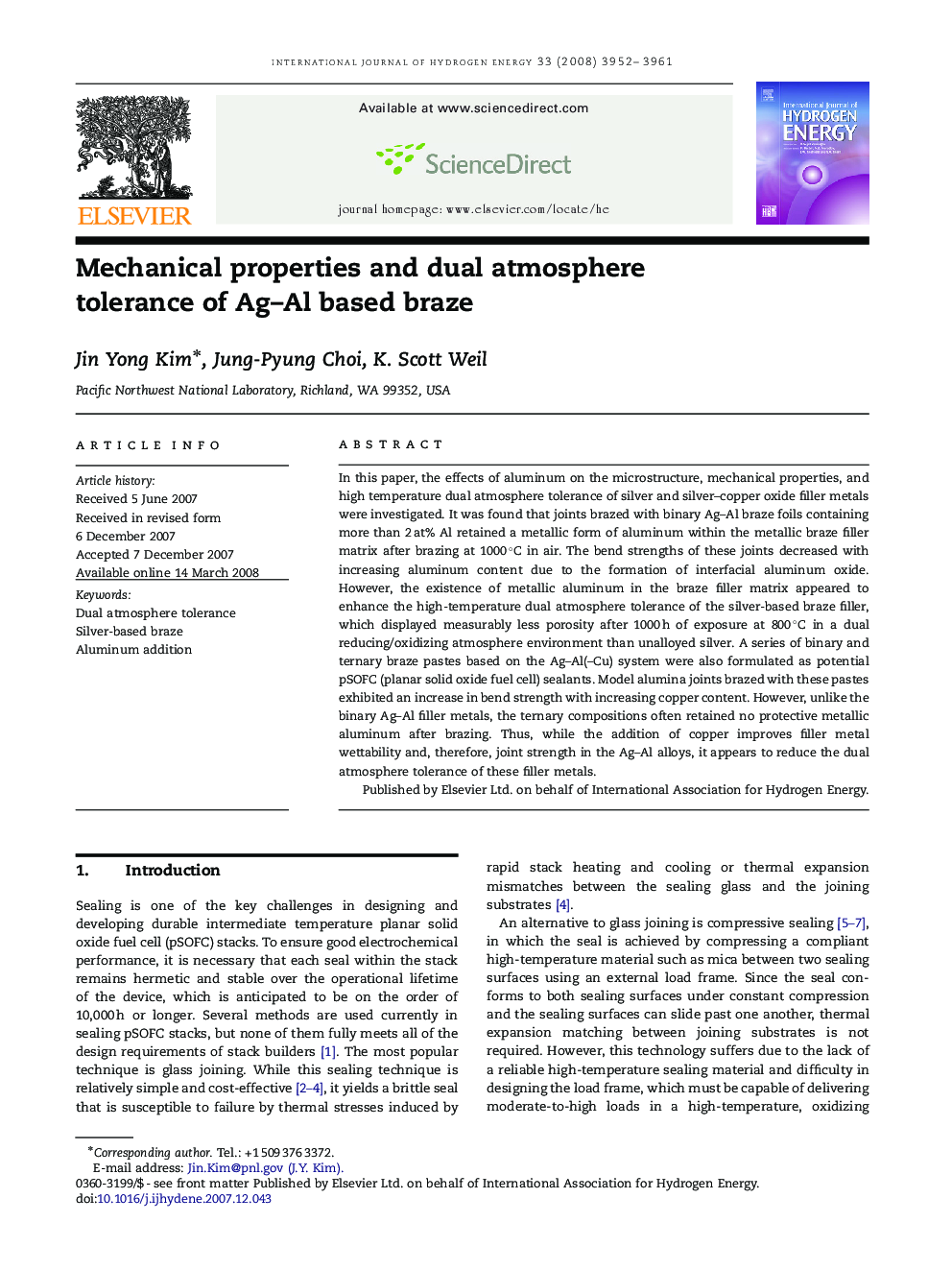| Article ID | Journal | Published Year | Pages | File Type |
|---|---|---|---|---|
| 1283687 | International Journal of Hydrogen Energy | 2008 | 10 Pages |
In this paper, the effects of aluminum on the microstructure, mechanical properties, and high temperature dual atmosphere tolerance of silver and silver–copper oxide filler metals were investigated. It was found that joints brazed with binary Ag–Al braze foils containing more than 2 at% Al retained a metallic form of aluminum within the metallic braze filler matrix after brazing at 1000∘C in air. The bend strengths of these joints decreased with increasing aluminum content due to the formation of interfacial aluminum oxide. However, the existence of metallic aluminum in the braze filler matrix appeared to enhance the high-temperature dual atmosphere tolerance of the silver-based braze filler, which displayed measurably less porosity after 1000h of exposure at 800∘C in a dual reducing/oxidizing atmosphere environment than unalloyed silver. A series of binary and ternary braze pastes based on the Ag–Al(–Cu) system were also formulated as potential pSOFC (planar solid oxide fuel cell) sealants. Model alumina joints brazed with these pastes exhibited an increase in bend strength with increasing copper content. However, unlike the binary Ag–Al filler metals, the ternary compositions often retained no protective metallic aluminum after brazing. Thus, while the addition of copper improves filler metal wettability and, therefore, joint strength in the Ag–Al alloys, it appears to reduce the dual atmosphere tolerance of these filler metals.
